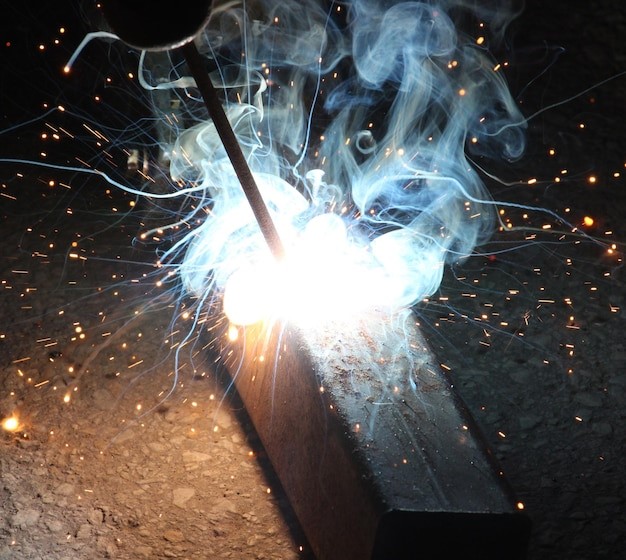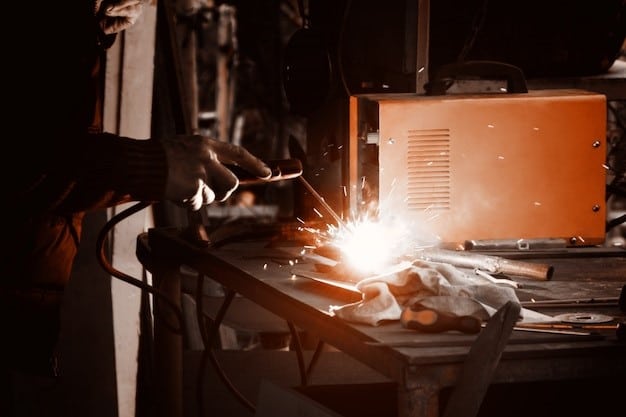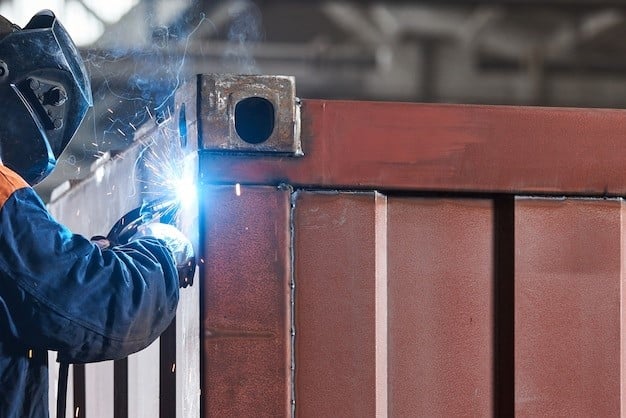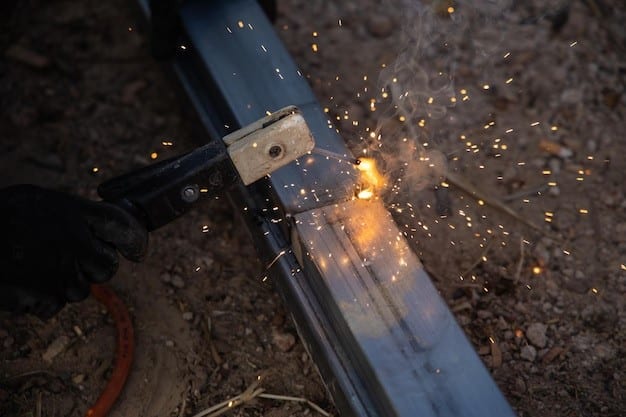Welding stainless steel is a key part of various industries. It’s valuable for its efficiency in creating durable and corrosion-resistant joints. Industries like construction and manufacturing need to rely on stainless steel welding for their daily operations.
However, this particular welding comes with its own risks, from excessive heat to harmful fumes. Ensuring safety is not just about maintaining industry regulations; it’s about safeguarding the health and well-being of operators.
The following guide will help you identify welding risks and follow stainless steel welding safety tips for quality work. For more other welding tips, you can read our blog: 6 Essential Tips for Welding Safety.
Risks in Welding Stainless Steel
Understanding risks associated with a particular task can help to do that task properly. Because it makes the operators careful about some risks and they can complete the task without making any errors. The primary risks in welding stainless steel are:
- Toxic Fumes
- UV Radiation Exposure
- Risk of Electric Shock
- Fire Hazards
- Burns from Hot Materials
- Hearing Damage
1. Toxic Fumes
Welding stainless steel produces fumes that contain harmful metals like chromium and nickel. Breathing in these fumes can hurt your lungs and cause serious diseases. To stay safe, wear proper protective equipment and work in a place with plenty of natural air.

2. UV Radiation Exposure
Production of ultraviolet (UV) radiation is very common during welding stainless steel. Exposure to UV rays can cause burns on your skin and hurt your eyes. Wearing a welding helmet and fire-resistant clothing can protect your body and sensitive parts like your face and eyes.
3. Risk of Electric Shock
Welding machines use electricity as a power source and there’s always a risk of electric shock. This can happen if you accidentally touch open wires or wet surfaces while working. Check your equipment regularly and make sure they are in good condition.
4. Burns from Hot Materials
Steel surface retains heat for a long time after welding. Touching it without realizing how the temperature on the surface can cause severe burns. Always use heat-resistant gloves and tools to hold and move the materials.
5. Hearing Damage
In the welding process, cutting and grinding are involved which produce noise. The overall process seems noisy to many welders.
However, the loud sounds from the welding job can damage your hearing. You might be used to the sound but be attentive to take care of your ear. Wear ear protection, like earmuffs or earplugs.
6. Fire Hazards
Welding metals produces high heat and sparks that can set nearby flammable items on fire. This is dangerous in areas with chemicals, wood, and paper. Check and ensure your workspace is clean before welding.

5 Essential Stainless Steel Welding Safety Tips
Welding is a craft, and it becomes more important when it comes to welding stainless steel. It’s not only a technique but also about safety. The process demands maintaining some safety steps to ensure safe welding and the safe health of the welder.
- Proper Ventilation
- Proper PPE (Personal Protective Equipment)
- Safe Distances between Welding Stations
- Appropriate Stainless Steel Grades
- Safe Welding Techniques
1. Proper Ventilation
A suitable ventilation system keeps the welder safe from harmful fumes. Welding steel generates chromium and nickel, which can lead to life-threatening health issues.
Experts suggest utilizing a local exhaust ventilation (LEV) system to capture fumes straight at the source. Therefore, fumes can’t be mixed with the surrounding air. If installation of LEV is not possible, work in open spaces or well-ventilated areas with sufficient airflow.
Industrial fans also work to keep the air fume-free. For localized air cleaning in small workshops, portable fumes extractors are helpful enough.
When proper ventilation setup is difficult, make sure to wear a respirator and stay safe from inhaling toxic fumes.
2. Proper PPE (Personal Protective Equipment)
Personal protective equipment (PPE) saves the welder by safeguarding from burns, toxic exposure, and UV radiation. PPE includes welding helmet, protective clothing, welding gloves, and boots.
Welding helmet from professional welding helmet suppliers protects your sensitive organs like eyes from intense sparks and light. The helmet should meet the ANSI Z87.1 standard for complete eye protection.
Don’t hesitate to wear flame-resistant jackets, pants, and gloves. Ensure these are made of treated cotton or leather to avoid burns. Wear gloves so that your hands are safe from hot surfaces, burns, and sparks. Using boots and hearing protection when working is also necessary.

3. Safe Distances between Welding Stations
Keep safe distances between welding stations to prevent accidents caused by flying sparks and distractions from the welders.
Experts recommend maintaining a distance of 10 to 15 feet between two welding stations. Ensure the workspace is clean and there is a barrier to stop flying debris. Welding screens and curtains can prevent accidental exposure.
Ensure each station is properly organized with effortless access to safety equipment. Keep fire extinguishers nearby for urgent needs.
4. Appropriate Stainless Steel Grades
Stainless steel grades first control the quality of the work and then it helps manage the working environment. Chromium content in the steel determines the production of hazardous smoke. Higher chromium means more fumes. You should provide extra attention when welding grades 304 or 316.
Low-emission stainless steel grade generates less detrimental fumes. If possible, select this type of steel for your project. Additionally, prepare the working environment for better results. Remove oils, contaminants, and coatings from the surface that can lead to burns.
5. Safe Welding Techniques
Welding techniques ensure the weld quality and safety of the welder simultaneously. Proper technique reduces the risk of unexpected incidents and hazards.
Excessive heat can lead to increased fumes, spatter, and warping. Adjust the welding machine’s settings to match the grades of stainless steel.
Make sure the arc time is not unnecessarily longer. Continue welding as long as necessary to finish the project. It’s because prolonged arc time produces more fumes.
TIG welder provides maximum control and precision and reduces spatter and fumes production when welding stainless steel. So, employing the TIG welding technique can be a great safety step.
Tips for Preventing Other Potential Risks

Welding activity involves some challenges and stainless steel welding adds additional challenges because of its materials and process. There are some welding on stainless steel safety tips for preventing other potential risks.
Fire and Explosion Prevention: Welding generates sparks, heat, and molten metal. These elements can cause fires and even explosions. You can remove flammable liquids, paper, clothes, and other combustibles from the welding area. Ensure gas cylinders used for welding are managed safely.
Electrical Safety: Welding tools operate on higher sources of current and voltage. Misuse of them can cause unexpected accidents. Check all power sources, cables, and connectors for wear or loose connections before operation. Weld in dry conditions. A wet environment increases the risk of electric shock.
Confined Space Safety: Avoid confined space, weld in an open or well-ventilated workspace. If the space is confined, test it for flammable vapors and hazardous gases.
Slips and Falls Prevention: Maintain an organized workspace, and keep it clean for work. Make sure the surface is even, it will minimize the risk of accidents like slips and falls. Secure cables and hoses correctly; remove welding spatter and debris. You can use slip-resistant mats on the floor of the workshop.
Choosing Reliable Welding Equipment and Suppliers
In welding, having the right equipment and a reliable welding equipment supplier can make all the difference. Choosing the best takes some time but it will not disappoint you when working. Here are some key elements to consider to find reliable welding equipment from the right supplier.
Understand Your Needs
Consider why you’re welding on stainless steel. Sometimes you may need to do heavy-duty tasks and sometimes smaller repairs. Each type of welding project requires specific equipment. Match the equipment to your project’s needs before making a decision.
Check Equipment Features
Welding machines come with different features like adjustable settings, safety functions, and others. A versatile machine can do a lot of tasks. Pick a machine that provides user-friendly features and easy-to-understand manual. Consider a TIG welder from reliable TIG welder suppliers with automatic features to simplify your work.
Look for Trusted Brands
The same products can be available from different manufacturers. Be sure to buy a welder manufactured by a trusted brand. It will help you to work confidently.
Do some research and find out what brand is trusted by most professional users. Check reviews and select a welder that comes with outstanding features and warranty.
Test Before You Buy
If possible, try the equipment before buying. Some suppliers may allow testing of the tool in the store. This will surely help you feel the machine’s efficiency and durability. If the machine meets your demands, you can decide on that item.
Prioritize Safety
Make sure your selected equipment has features like thermal overload protection that offers stainless steel welding safety. Also, invest in safety gear such as welding helmets, heat-resistant gloves, and protective goggles from reliable suppliers.
Final Thoughts
While welding stainless steel, following the right safety measures is essential for protecting yourself and delivering better welds. You can focus on your work and minimize hazards by organizing your workshop with reliable equipment and tools.
To support your welding jobs, consider picking tools from YesWelder. It’s a trusted supplier of high-quality welding machines and tools. Businesses can rely on their equipment to meet the welding performance and safety standards.
FAQs
What are the risks associated with welding stainless steel?
The primary risks include fume inhalation, burns, heat injuries, electric shocks, eye damage, etc. High temperatures in the welding area can cause burns. Sparks can cause heat injuries and fire hazards in the area.
Do you need personal protective equipment for welding?
Personal protective equipment (PPE) can be very helpful in ensuring your welding stainless steel safety. Some essential PPEs are welding helmet, flame-resistant clothing and gloves, fume-protective masks, heat-resistant boots, hearing protection tools, etc.
Can I minimize fire hazards while welding stainless steel?
The welder can minimize fire hazards by taking quick steps when needed. To control fire hazards, remove any flammable materials from the workshop. Employ a fire-resistant welding mat. Keeping a fire extinguisher in the workspace is a must.
How does hexavalent chromium impact welding safety?
Hexavalent chromium turns up due to heat during the stainless steel welding process. It’s toxic and can cause skin irritation and respiratory issues. To mitigate exposure, use PPE and maintain OSHA standards.
How to handle electrical welding equipment safely?
Safe handling of welding equipment is vital to avoid life-threatening accidents. Operators should regularly inspect cables, connectors, and plugs. Be aware of dump surfaces while welding. Ensure each component is in good condition and grounded properly.



